Is the Ha Giang Loop dangerous? Many travelers also ask, is Ha Giang Loop safe for beginners or only suitable for experienced riders. The truth is, with the right preparation, both first-time riders and seasoned adventurers can enjoy the journey safely while taking in northern Vietnam’s breathtaking scenery. In this article, practical safety tips and essential gear recommendations to help you ride confidently, enjoy breathtaking scenery and minimize risks.
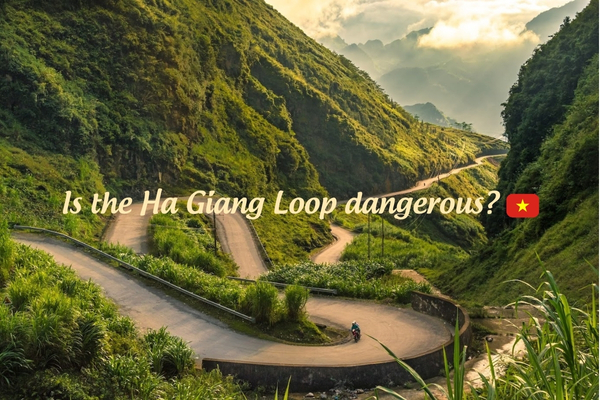
Is the Ha Giang Loop dangerous?
The Ha Giang route is famous for its breathtaking landscapes and adventurous routes, attracting tourists who love to explore. However, before you set off, you need to understand the potential risks. So, let’s find out what makes this route challenging.
- Rough and narrow roads: Most mountain paths are unpaved, made of gravel or dirt and easily affected by rain, wind and erosion, making riding more challenging.
- Cliffside roads without barriers: Some stretches run along steep cliffs with no guardrails, where a single mistake can be life-threatening.
- Unpredictable weather: Sun, rain, fog and sudden storms can appear in a single day, reducing visibility and increasing the risk of accidents.
- Falling rocks and stray animals: Landslides and livestock on the road are common, creating sudden obstacles that can block the path for hours.
- Limited medical facilities: Remote areas mean the nearest clinic or hospital may be hours away, making even minor injuries potentially serious.
- Reliance on motorbikes: Vehicle breakdowns are a real concern. With few repair options along the route, a reliable bike is essential for safety.
- Other drivers: The Ha Giang Loop is popular with tourists, so encountering other motorbikes, buses or local traffic adds collision risks.
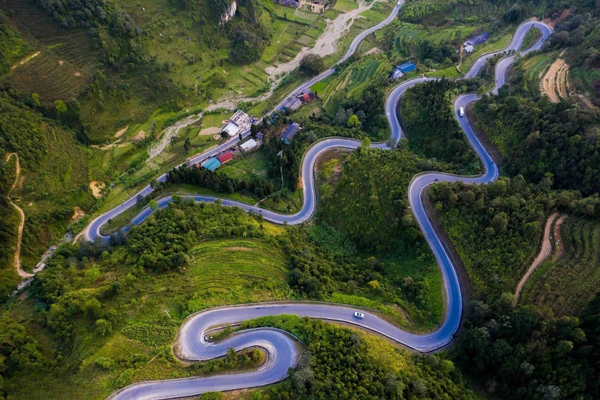
Safety tips for conquering the Ha Giang loop
Besides understanding is the Ha Giang Loop dangerous, follow these simple tips to confidently conquer winding roads, unpredictable weather, and remote areas.
Have a backup plan for the weather
Ha Giang’s weather can change in an instant – clear skies may turn into rain or fog within hours. Always carry a reliable raincoat, warm layers and keep your itinerary flexible to adjust to conditions. If storms or heavy mist appear, slow down, postpone the ride or use support transport for safety.
The ideal time to ride the Ha Giang Loop is from November to April, when the climate is cooler, drier and more predictable.
Choose the right motorbike
The Ha Giang Loop includes steep passes, rocky paths and gravel roads, so choosing the right bike is essential. Opt for a semi-automatic or manual motorbike with strong brakes, good suspension and reliable headlights. Avoid underpowered scooters, as they struggle on steep climbs. Renting from a trusted shop ensures better maintenance and reduces the risk of breakdowns along the way.
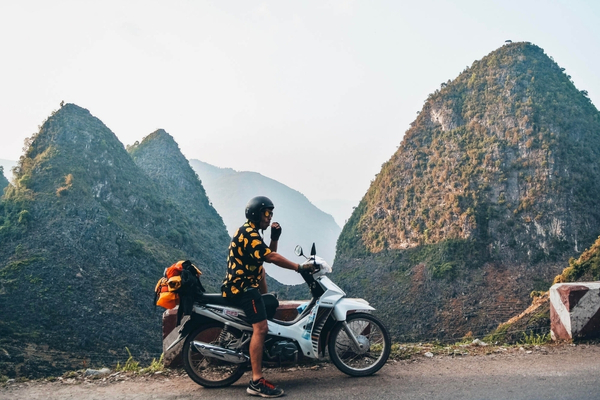
Ride with a travel companion
Riding with a partner or guide greatly improves safety. In case of accidents, wrong turns, or mechanical issues, having someone by your side makes a huge difference. Companions can share navigation, provide immediate assistance, and make the trip more enjoyable. Solo rides can be risky in remote areas where help may take hours to arrive.
Wear proper protective gear
A certified helmet, gloves, durable jacket, padded pants, knee and elbow guards and sturdy boots protect you from both weather and injuries. With sharp bends, loose gravel and unpredictable road conditions, quality gear minimizes the risk of serious harm in case of slips or minor collisions.
Be cautions on sharp turns
Hairpin bends are common throughout the loop, often with limited visibility or no guardrails. Approach slowly, honk before blind curves, and stay closer to the inner side of the road to avoid oncoming traffic. On wet or gravelly sections, steer gently and avoid sudden braking or sharp turns, which can easily cause skids.
Stay hydrated and take regular breaks
Mountain climates can be dry during the day, which can easily lead to fatigue. Carry at least 1.5 – 2 liters of water per person per day and plan to stop every 1 – 2 hours. Take breaks to stretch, replenish your energy and check your brakes, tires and bike chain. Regular stops not only help you stay alert, but also prevent small mechanical problems from becoming bigger problems.
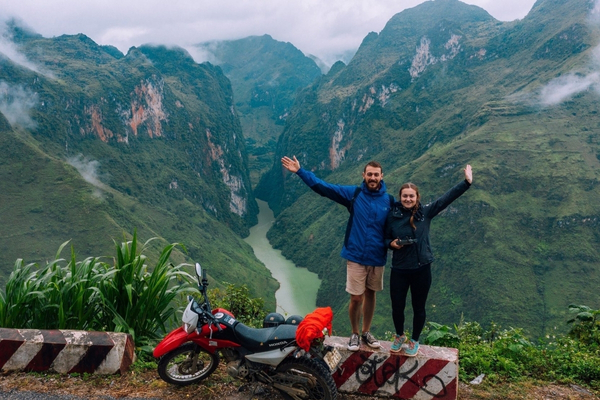
Preparing for emergencies
No matter how carefully you plan, the remote stretches of the Ha Giang Loop require you to be prepared for surprises. A few important preparations can help you minimize unwanted risks.
- Know the nearest medical facilities: Research clinics and hospitals in Ha Giang, Dong Van and Meo Vac before your trip. Having a clear idea of where to go saves valuable time in an emergency.
- Learn basic repair & riding skills: Even simple know-how like fixing a flat tire, restarting a stalled bike or handling skids on gravel – can prevent small issues from becoming major problems.
- Have a communication backup: Mobile signal is unreliable in valleys and mountain passes. A local SIM card with the best coverage (like Viettel) or even a basic walkie-talkie can keep you connected.
Essential gear to bring
Riding the Ha Giang Loop means venturing into rugged mountains with limited shops or repair services. Packing the right gear not only keeps you safe and comfortable but also ensures you can handle surprises along the way.
- First aid & essentials: Pack a compact first-aid kit, basic medicines and keep healthy snacks plus enough drinking water to stay energized and hydrated along the way.
- Cash & important documents: ATMs are rare outside Ha Giang City, so carry local currency for fuel, food or small repairs. Keep your ID, driver’s license and insurance details in a waterproof pouch.
- Navigation & emergency contacts: Save local hospitals, rescue hotlines and your rental shop’s number. Download offline maps since signal often drops in the mountains.
- Insurance & safety backup: Ensure your travel insurance covers motorbike riding. Share your route with a friend or guide so someone can act quickly if you don’t check in on time.
- Bike tools & quick fixes: Bring basic repair tools and know where nearby workshops are located in case of breakdowns. Even a small kit can save you hours of waiting for help.

Key things to keep in mind when riding the Ha Giang Loop
The journey around Ha Giang is exciting but also challenging. Keep these important notes in mind to ensure your safety, comfort and confidence on your journey:
- Ride within your limits: Slow down on steep descents or sharp bends, walk the bike over tricky sections if necessary.
- Refuel strategically: Gas stations are rare, so fill up whenever possible and carry a small reserve.
- Avoid night riding: Poor lighting and unexpected obstacles make riding after dark unsafe.
- Respect local traffic & livestock: Share the road with trucks, bikes, pedestrians and even animals always slow down in villages.
- Check road & weather conditions: Ask locals about landslides, gravel or road closures before heading out.
- Stay focused: Keep eyes on the road, not your phone potholes and blind curves appear quickly.
- Be open to help: Don’t hesitate to ask locals or fellow riders for directions or support when in doubt.
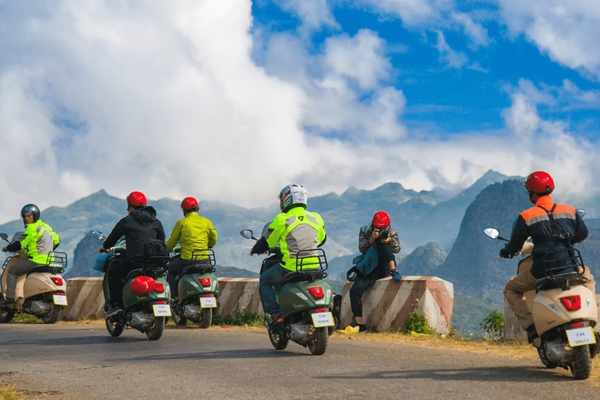
So, is the Ha Giang Loop dangerous? The route has sharp mountain passes, unpredictable weather, and remote stretches, but it can be navigated safely with preparation and caution. Travelers who choose the right bike, wear proper gear and respect the road usually find the experience both safe and unforgettable. Ready for the challenge? Explore our full Ha Giang Loop safety guide or book your trip directly with Ha Giang City Hostel. Call us anytime at 0945 49 69 96 to start your adventure today.
>>> Read more: What to pack for Ha Giang loop? || Best trekking trails in Ha Giang for adventure lovers




